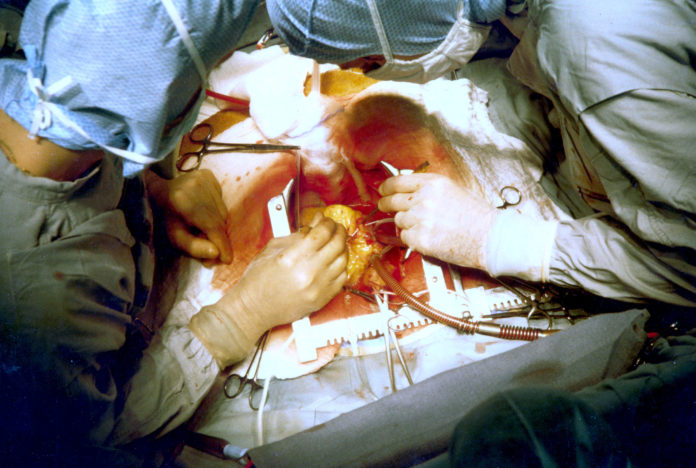Can parts of the heart muscle which are dead, be healed by suturing patches over them – much the same way torn clothes are repaired using patchwork? The answer, according to US researchers, is yes.
Researchers from the University of Alabama at Birmingham in the US found that heart-muscle patches created from human cells may significantly improve recovery from a heart attack. The results are a step closer to the goal of treating human heart attacks by suturing cardiac-muscle patches over an area of dead heart muscle in order to reduce the pathology that often leads to heart failure. Each patch is 1.57 by 0.79 inches in size and nearly as thick as a dime. The study found that transplanting two of these patches onto the infarcted area of a pig heart significantly improved function of the heart’s left ventricle, the major pumping chamber.
The patches also significantly reduced infarct size, which is the area of dead muscle; heart-muscle wall stress and heart-muscle enlargement; as well as significantly reducing apoptosis, or programmed cell death, in the scar boarder area around the dead heart muscle. Furthermore, the patches did not induce arrhythmia in the hearts, a serious complication observed in some past biomedical engineering approaches to treat heart attacks.
Each patch is a mixture of three cell types — 4 million cardiomyocytes, or heart-muscle cells; 2 million endothelial (skin) cells, which are well-known to help cardiomyocytes survive and function in a micro-environment; and 2 million smooth muscle cells, which line blood vessels. The three cell types were differentiated from cardiac-lineage, human induced pluripotent stem cells, or hiPSCs,rather than using hiPSCs created from skin cells or other cell types.
Each patch was grown in a three-dimensional fibrin matrix that was rocked back and forth for a week. The cells begin to beat synchronously after one day. This mixture of three cell types and the dynamic rocking produced more heart muscle cells that were more mature, with superior heart-muscle physiological function and contractive force. The patches resembled native heart-muscle tissue in their physiological and contractile properties.


